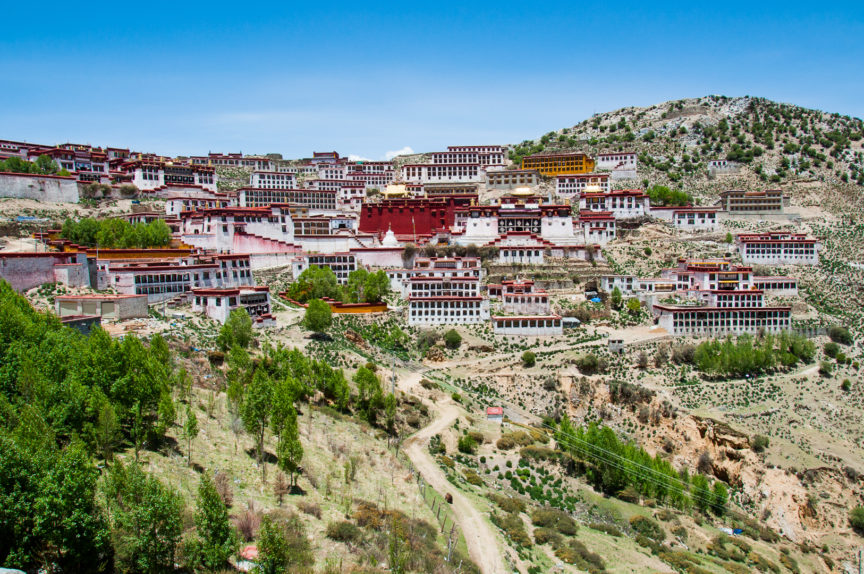Located 50 km northeast of Lhasa, Ganden Monastery (དགའ་ལྡན་དགོན་པ།)is a relatively quick trip outside of Lhasa for visitors who wish to see the monastery, and enjoy the beautiful view of the valley below. Ganden Monastery is the biggest of the Gelugpa Monasteries, and was the first founded in the sect.
Tsongkhapa was the founder of the Gelugpa sect (also known as Geluk), and through his work, he is revered as a reformer of Tibetan Buddhism. With the support of the local authorities and the people, Tsongkhapa founded Ganden Monastery in the 15 century. In order to enlarge the influence of the Gelugpa sect, and to help Tibetan Buddhism with the chaotic and disordered situation, Tsongkhapa performed the first Monlam Prayer Festival in Lhasa. This festival gathered more than 10,000 local people, monks, and nuns to pray, and even today the Gelugpa sect still keeps the tradition of the Monlam Festival alive. Starting after the Tibetan New Year, the festival lasts for 15 days and many come together around the community to perform rituals, pronounce blessings, and of course, to pray.
Kedrub Je and Gyatsab Je were the most influential of Tsonkhapa’ students, and when Tsonkhapa passed away in 1411, the abbotship of the monastery passed to these two students. These students were also the next in line to hold the post that came to be known as the Ganden Tripa – a position earned through merit, and is the title given to the leader of the Gelugpa sect. Thus, the Ganden Tripa transmission system was established, and today over 100 scholars have held the position.
Currently there are a couple hundred monks living in the Ganden Monastery, and guests are welcome to watch and observe as monks debate, chant their prayers, and go about their daily life. Some visitors take a few minutes to meditate and pray themselves, although there is no expectation placed on guests to do so if they do not feel comfortable. As with any monastery, the primary expectation is that guests would be respectful in their observation, and that they would not be disruptive of those who are there to worship.

